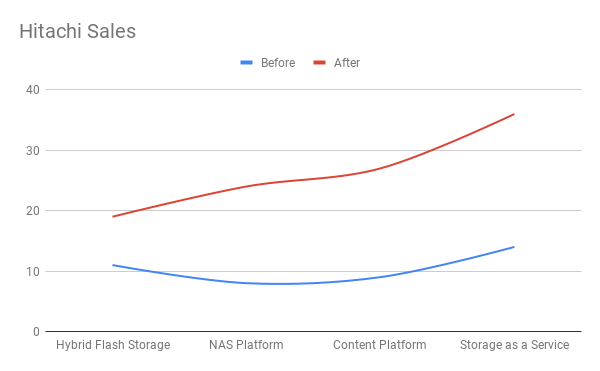How Hitachi improved communication with its prospective clients
and able to improve sales

What's Hitachi
Hitachi was founded in 1910 by electrical engineer Namihei Odaira in Ibaraki Prefecture. The company’s first product was Japan’s first 4-kilowatt (5 hp) induction motor, initially developed for use in copper mining.
The company began as an in-house venture of Fusanosuke Kuhara’s mining company in Hitachi, Ibaraki. Odaira moved headquarters to Tokyo in 1918. Odaira coined the company’s toponymic name by superimposing two kanji characters: hi meaning “sun” and tachi meaning “rise.
World War II had a significant impact on the company with many of its factories being destroyed by Allied bombing raids, and discord after the war. Founder Odaira was removed from the company and Hitachi Zosen Corporation was spun out. Hitachi’s reconstruction efforts after the war were hindered by a labor strike in 1950. Meanwhile, Hitachi went public in 1949.
Hitachi America, Ltd. was established in 1959. Hitachi Europe, Ltd. was established in 1982. From 2006 to 2010, Hitachi lost US$12.5 billion, the largest corporate loss in Japanese history. This prompted Hitachi to restructure and sell a number of divisions and businesses, a process that is expected to finish in 2021.
Tech Company. Digital Partner
Working with corporate giant
Techwink designed and developed an E-book web and mobile application where sales offers can be sent to prospective customers. An E-book is a compiled digital asset that is available on the web. Customers can preview e-book with a lot of features and the sales team was able to track their interests and assist customers with the best services.

Techwink's Strengths At A Glance
E-book web and mobile application
At Techwink, we offer ideal versatile procedures and answers for cross-platform application development. This ensures the most extreme development and least task cost. With us, you can spare application development time, get compelling undertaking the board, make concentrated code for simple exchanging, and abbreviate your turnaround time.
we love them
what our clients have to say
Everything you need, Techwink Team have you covered. You can tell they are passionate about what they do. I couldn't recommend anyone else more than Techwink. You won't regret it!
